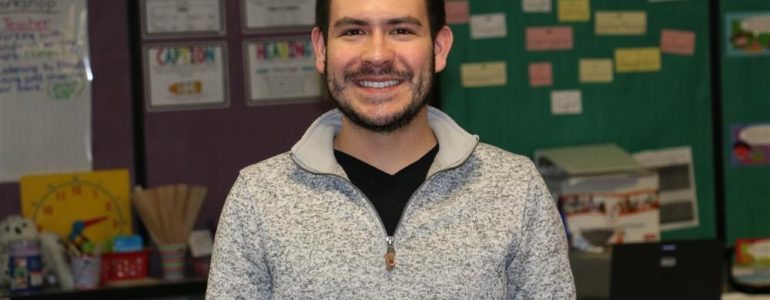By Cameron Carter
As a child, I never considered myself to be creative. I would watch the other children draw magnificent pictures of people, while mine looked like a somewhat glorified stick figure. Others would craft beautiful clay pots, while mine would remain in the kiln because the handle and top fell off. Not only did I see my lack of artistic abilities at school, but in the home as well. My mom always was able to whip up any type of drawing just by quickly looking at a photo. She would paint magnificent landscape portraits on canvases. Growing up, she tried to involve me in classes at the local art museum, but that was very short lived.
As one can clearly see, I felt as though I lacked the creative gene. This fixed mindset frame I was in all changed when I attended the Columbus Museum of Art Creativity Institute this past summer. I was proposed with the opening statement, “Creativity does not equal art skill.” At first, I was a bit confused. I never thought of creativity as not being able to draw the perfect landscape scene or cartoon character. The institute taught me that we are all artists in our own unique way. One does not have to possess art skills to be creative. Taking an alternative route home from work is thinking creatively. Taking a photo of your dinner and editing it is being creative. Organizing your freezer like a Tetris game so all your food fits is thinking creatively. My eyes were opened to forming a new definition of creativity.
The institute referred to the text, “Making Thinking Visible” by Ron Ritchhart. The book promotes students to notice and wonder about the world around them. Students are encouraged to be curious and use multiple pathways of critical thinking to find many possible solutions. Teachers must engage and provide students with models to promote their thinking. Students must be open to disequilibrium in their thinking in order to achieve the highest level of creativity. It may certainly look messy and unorganized, but it is the thinking process that is most powerful. Educators need to understand it is always about the quality of thinking versus the quantity of the thinking. One must embrace the world of ambiguity in order to help adapt this creative mindset.
After this powerful mind shift experience, I wanted to quickly incorporate it in the classroom. I wanted my students, and their parents, to know that creativity is not just being able to draw the perfect image. For our school’s open house, I asked the parents to partake in a creativity challenge where they received a brown lunch bag full of random items. The instructions were simple and concise: collaborate in small groups to create an emotion. The ambiguity of the instructions alarmed some, but they began right away. I walked around and documented the conversations overheard, and at the end of the challenge, we reflected on all the thinking processes observed. The parents were amazed at the higher order thinking skills that were demonstrated with the simple task. Next, it was onto the students.
We completed the creativity challenge, and we reflected on our challenges and triumphs. The students shared the collaboration piece was key when they faced a moment of disequilibrium. They saw the value in the questions, “What do you notice?” and “What do you wonder?”
In our class, we encourage all to speak our common language to promote creative thinking. I encourage educators to take this leap to bring creativity in the classroom. Always remember, creativity does not equal art skill.
Cameron Carter is a first-grade teacher at Evening Street Elementary in Worthington, OH. He is the Elementary Lead Ambassador for the National Council of Teachers of English and the Elementary Liaison for the Ohio Council of Teachers of English Language Arts. To continue learning with Cameron, follow him on Twitter @CRCarter313
![]()













